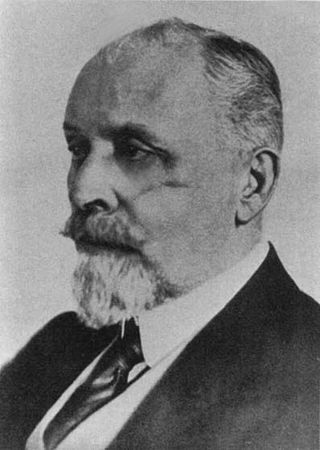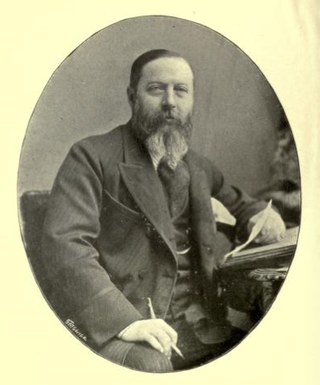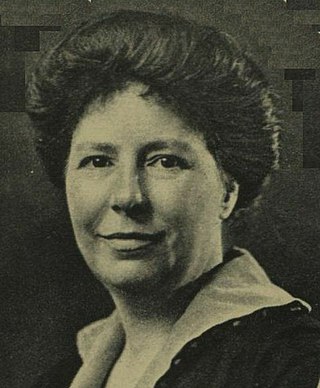Related Research Articles

Spiritualism was a social religious movement in the nineteenth century, according to which an individual's awareness persists after death and may be contacted by the living. The afterlife, or the "spirit world", is seen by spiritualists not as a static place, but as one in which spirits continue to evolve. These two beliefs—that contact with spirits is possible, and that spirits are more advanced than humans—lead spiritualists to the belief that spirits are capable of providing useful insight regarding moral and ethical issues, as well as about the nature of God. Some spiritualists will speak of a concept which they refer to as "spirit guides"—specific spirits, often contacted, who are relied upon for spiritual guidance. Emanuel Swedenborg has some claim to be the father of Spiritualism. Spiritism, a branch of spiritualism developed by Allan Kardec and today practiced mostly in Continental Europe and Latin America, especially in Brazil, emphasizes reincarnation.

The Spiritualist Association of Great Britain is a British spiritualist organisation. It was established on 10 July 1872.

In spiritualism, paranormal literature and some religions, materialization is the creation or appearance of matter from unknown sources. The existence of materialization has not been confirmed by laboratory experiments. Numerous cases of fraudulent materialization demonstrations by mediums have been exposed.

Victoria Helen McCrae Duncan was a Scottish medium best known as the last person to be imprisoned under the Witchcraft Act 1735 for fraudulent claims. She was famous for producing ectoplasm which was proved to be made from cheesecloth.

Harry Price was a British psychic researcher and author, who gained public prominence for his investigations into psychical phenomena and exposing fraudulent spiritualist mediums. He is best known for his well-publicised investigation of the purportedly haunted Borley Rectory in Essex, England.

Mediumship is the practice of purportedly mediating communication between familiar spirits or spirits of the dead and living human beings. Practitioners are known as "mediums" or "spirit mediums". There are different types of mediumship or spirit channelling, including séance tables, trance, and ouija.

Eusapia Palladino was an Italian Spiritualist physical medium. She claimed extraordinary powers such as the ability to levitate tables, communicate with the dead through her spirit guide John King, and to produce other supernatural phenomena.

Ectoplasm is a term used in spiritualism to denote a substance or spiritual energy "exteriorized" by physical mediums. It was coined in 1894 by psychical researcher Charles Richet. Although the term is widespread in popular culture, there is no scientific evidence that ectoplasm exists and many purported examples were exposed as hoaxes fashioned from cheesecloth, gauze or other natural substances.

Albert Freiherr von Schrenck-Notzing was a German physician, psychiatrist and notable psychical researcher, who devoted his time to the study of paranormal events connected with mediumship, hypnotism and telepathy. He investigated Spiritualist mediums such as Willi Schneider, Rudi Schneider, and Valentine Dencausse. He is credited as the first forensic psychologist by Guinness World Records.
The American Society for Psychical Research (ASPR) is the oldest psychical research organization in the United States dedicated to parapsychology. It maintains offices and a library, in New York City, which are open to both members and the general public. The society has an open membership, anyone with an interest in psychical research is invited to join. It maintains a website; and publishes the quarterly Journal of the American Society for Psychical Research.

William Stainton Moses was an English cleric and spiritualist medium. He promoted spirit photography and automatic writing, and co-founded what became the College of Psychic Studies. He resisted scientific examination of his claims, which have generally been demolished.

Eva Carrière, also known as Eva C, was a fraudulent materialization medium in the early 20th century known for making fake ectoplasm from chewed paper and cut-out faces from magazines and newspapers.

Eileen Jeanette Vancho Lyttle Garrett was an Irish medium and parapsychologist. Garrett's alleged psychic abilities were tested in the 1930s by Joseph Rhine and others. Rhine claimed that she had genuine psychic abilities, but subsequent studies were unable to replicate his results, and Garrett's abilities were later shown to be consistent with chance guessing. Garrett elicited controversy after the R101 crash, when she held a series of séances at the National Laboratory of Psychical Research claiming to be in contact with victims of the disaster. John Booth, and others, investigated her claims, and found them to be valueless, easily explainable, or the result of fraud.
Gustav Geley was a French physician, psychical researcher and director of the Institute Metapsychique International from 1919 to 1924.

The cross-correspondences refers to a series of automatic scripts and trance utterances from a group of automatic writers and mediums, involving members of the Society for Psychical Research (SPR). According to psychical researchers the correspondences when put together convey intelligible messages either from spirits of the dead or telepathy.

Geraldine Dorothy Cummins was an Irish spiritualist medium, novelist and playwright. She began her career as a creative writer, but increasingly concentrated on mediumship and "channelled" writings, mostly about the lives of Jesus and Saint Paul, though she also published on a range of other topics.

Trevor Henry Hall (1910–1991) was a British author, surveyor, and sceptic of paranormal phenomena. Hall made controversial claims regarding early members of the Society for Psychical Research. His books caused a heated controversy within the parapsychology community.
Georgess McHargue was an American writer and poet.

William Roy (1911-1977) was the pseudonym of William George Holroyd Plowright, a notorious fraudulent medium in the history of British spiritualism.

Stanhope Templeman Speer was a British physician and mountain climber.
References
- ↑ Twigg, Ena - Occult World Retrieved 21/4/21.
- ↑ Raymond Buckland. (2005). The Spirit Book: The Encyclopedia of Clairvoyance, Channeling, and Spirit Communication. Visible Ink Press. pp. 418-419. ISBN 978-1578592135
- ↑ Jon Klimo. (1987). Channeling: Investigations on Receiving Information from Paranormal Sources. Jeremy P. Tarcher. p. 143. ISBN 978-1556432484
- ↑ John Booth. (1986). Psychic Paradoxes. Prometheus Books. p. 148. ISBN 978-0879753580
- ↑ Georgess McHargue. (1972). Facts, Frauds, and Phantasms: A Survey of the Spiritualist Movement. Doubleday. pp. 269-271. ISBN 978-0385053051 "The fact of Jim Pike's suicide had been reported in major newspapers only a month before the first seance, and it would not have required much imagination on the part of Mrs. Twigg to guess whom it was that the bishop expected to contact."